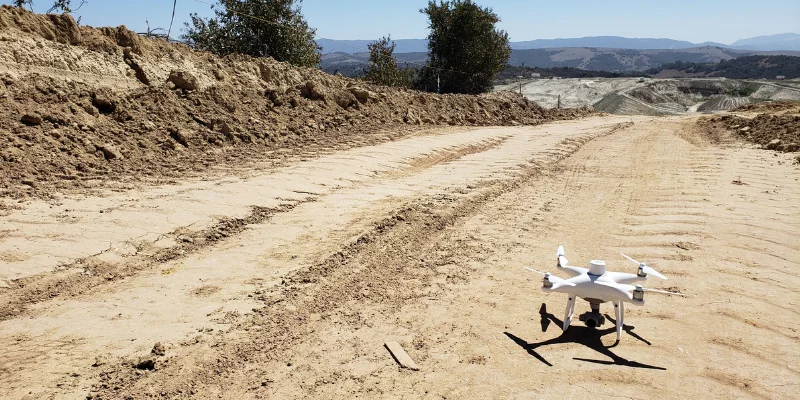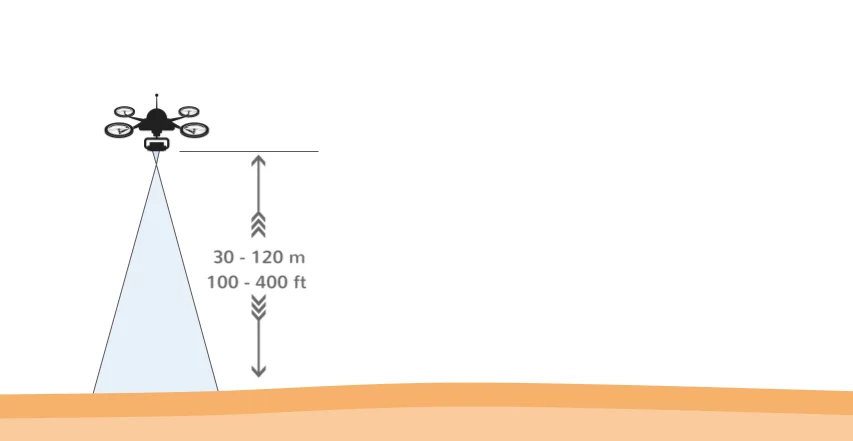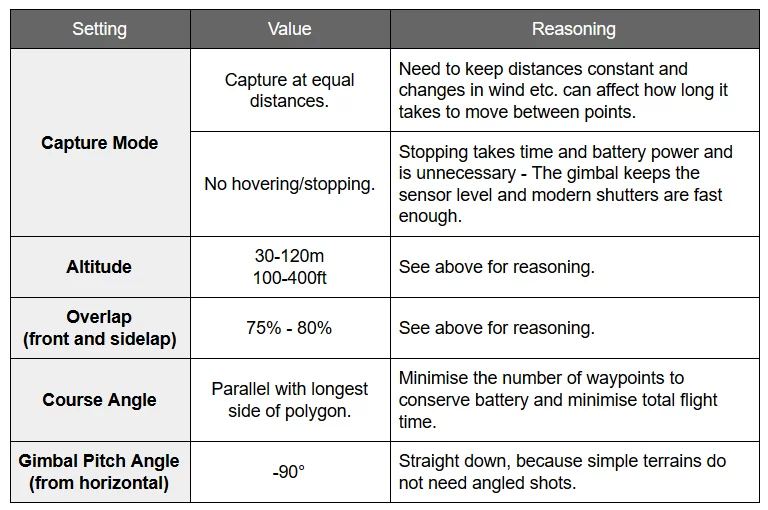How to Collect Quality Drone Data—Part 1: Capturing Bare Earth
Whether you’re trying to produce cut/fill maps for an earthwork project, measure the compaction rate on a landfill, inspect assets on a mine site, or do any other job you can use drones and photogrammetry for, collecting quality drone data is just as important as your UAV selection and ground control.

Poorly captured drone imagery can mean having to go back on site to do it all over again—or worse, making operational/safety decisions based on bad data and having to pay the price down the line.
The purpose of this series of articles is to arm you with the knowledge you need to be able to consistently capture sufficiently accurate and descriptive drone data, no matter what challenging terrain or asset you are faced with.
What we won’t be covering are the legalities of flying in your area, preflight checklists or the basics of flying a drone.
The Gist of Photogrammetry
It may sound a bit dry and complex, but it’s important to understand the basics of photogrammetry, because it defines the way we need to fly.
If you see the same feature from three or more known positions, you can triangulate the position of that feature in space. If you do this with multiple features describing the same object, you can stitch them together to form a 3D model of that object.
This means, that for every flight:
- You need at least three images of every point.
- You need common features between images for them to be stitched together.
What Are You Trying to Capture?
The more complex the terrain or object, the more complex data-capture techniques tend to become. This series of articles will start simple and gradually get more complex and more specific.
Today, we’ll focus on how to get quality drone data on the easiest kind of terrain to capture with a UAV survey: a flat bare earth site, such as the following.
- Relatively flat civil earthwork sites
- Stockyards
- New residential suburbs
- Beaches and small sand dunes
- Farms
If your site is similar to any of these examples, this article will cover most everything you need to know. If not, then it should provide you with a strong foundation of knowledge to build upon as more you work your way through the blog series.
How to Plan Your Flight
Computers are generally better at flying drones than we are, so try to do as little manual flying as possible when capturing your data to keep the images consistent and to spec.
DJI GS Pro is an app that flies the drone for you, to the specifications you give it. It’s free and does its job reliably well. That said, there are many other flight planning apps available, so feel free to use whichever one you feel most comfortable with.
There are two main things to consider when planning your flight:
- Overlap—This affects the possibility of building a complete model, flight time, and processing time.
- Altitude—This affects accuracy, flight time, and processing time.
1. Overlap
As we know, photogrammetry requires each point to be captured from at least three positions, which is why we set the sidelap and frontlap between 75% and 80%.
This will capture each point many times, so that if the drone fails to trigger a photo exactly on time or goes slightly off course, you’ll still capture every feature at least three times.
Now, you might wonder why we don’t just turn the overlap all the way up
This might sound good in theory, but in reality 75% provides sufficient overlap while minimizing the photo count. Generally speaking, more than 80% is overkill and will unnecessarily increase your flight and processing time.
2. Altitude
Your camera and altitude define your ground sampling distance (GSD), which is how big each pixel is on the terrain or object.
Your survey cannot be more accurate than the size of each pixel, so you need to make sure that your GSD is smaller than your desired accuracy. (We built a calculator to help you figure out GSD. Check it out.)
On the other hand, you don’t want to fly too close and end up with thousands of images, because it will take too long to capture and process (processing times can easily push into days or even weeks).
Real-world examples
Let’s say you have a Phantom 4 Pro or Phantom 4 RTK and you’re capturing small areas like residential blocks or stockyards and you want the best accuracy possible. In this instance, you can fly as low as 30m. This results in a GSD of 0.35in/px (0.89cm/px).
Since the best achievable accuracy with drones and photogrammetry is 0.8in (2cm) horizontally, this is the lowest you will ever need to fly above any bare earth job.
Now, let’s say you’re using the same drone to cover large areas like farms or coastlines and you’re just after 3ft (1m) contours or large approximate volumes. In that case, you can fly up at 400ft (120m) to get a GSD of 1.39in/px (3.54cm/px). This allows you to cover much larger areas in the same amount of time, using the same number of photos and batteries.
Basically, fly above 100ft (30m) and make sure your photo count doesn’t go too high.
Bonus: Other Settings
Most default settings should be fine, but there are some adjustments you need to make to ensure quality drone data capture on your UAV survey. These are tabulated below, along with explanations:








